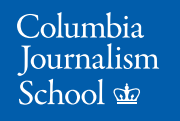![]() Every Friday, Mark Coddington sums up the week’s top stories about the future of news.
Every Friday, Mark Coddington sums up the week’s top stories about the future of news.
Leaving the old ad model behind: Much of the commentary about digital news this week was generated by two big reports, one on the business of digital journalism and the other on its consumption. We’ll start on the business side, with the Columbia j-school’s study on what we know so far about the viability of various digital journalism business models. As Poynter’s Bill Mitchell suggested, the best entry point into the 146-page report might be the nine recommendations that form its conclusion.
 Mitchell summed the report up in three themes: The audience for journalism is growing, though translating that into revenue is a challenge; the old model of banner ads isn’t cutting it, and news orgs need to look for new forms of advertising; and news orgs need to play better with aggregators and sharpen their own aggregation skills. In his response to the study, Reuters’ Felix Salmon focused on the advertising angle, arguing that journalism and advertising have too long been linked by mere adjacency and that “when you move away from the ad-adjacency model, however, things get a lot more interesting and exciting.”
Mitchell summed the report up in three themes: The audience for journalism is growing, though translating that into revenue is a challenge; the old model of banner ads isn’t cutting it, and news orgs need to look for new forms of advertising; and news orgs need to play better with aggregators and sharpen their own aggregation skills. In his response to the study, Reuters’ Felix Salmon focused on the advertising angle, arguing that journalism and advertising have too long been linked by mere adjacency and that “when you move away from the ad-adjacency model, however, things get a lot more interesting and exciting.”
The New York Times’ story on the report centered on advertising, too, particularly the growing need for journalists to learn about the business side of their products. (That was media consultant Mark Potts’ main takeaway, too.) Emily Bell, a scholar at the center that released the study, said that while journalists need to understand the business of their industry, integrating news and sales staffs isn’t necessarily the way to go.
The J-Lab’s Jan Schaffer recommended that news orgs respond to their business problems by learning from smaller startups and incorporating them more thoroughly into the journalism ecosystem. And paidContent’s Staci Kramer advised news orgs to focus on regular audiences rather than fly-by visitors: “Outwardly we like to complain about content farms; in reality, a lot of what news outlets are doing to the side of those front-page stories isn’t very different.”
Facebook’s growth as news driver: The other major report was released by the Pew Research Center’s Project for Excellence in Journalism and looked at how people access news on the web. This study, too, found that despite a small core of frequent users, news sites are dependent on casual users who visit sites infrequently and don’t stay long when they’re there. Poynter’s Rick Edmonds conveniently distilled the study into five big takeaways.
 The study also found that while Google is still the top referrer to major news sites, Facebook is quickly emerging as a significant news driver, too. University of British Columbia j-prof Alfred Hermida said this lines up with recent research he’s done among Canadians, and GigaOM’s Mathew Ingram said it showed that while Google is a dominant source for online news now, Facebook is primed to succeed it.
The study also found that while Google is still the top referrer to major news sites, Facebook is quickly emerging as a significant news driver, too. University of British Columbia j-prof Alfred Hermida said this lines up with recent research he’s done among Canadians, and GigaOM’s Mathew Ingram said it showed that while Google is a dominant source for online news now, Facebook is primed to succeed it.
Meanwhile, the study also found that surprisingly little traffic to news sites is driven by Twitter. Lauren Dugan of All Twitter said this finding casts some doubt on the idea that Twitter is “a huge link-sharing playground,” though the Wall Street Journal’s Zach Seward said the study misses that Twitter referrals are undercounted.
The Twitter undercounting was one of several problems that TBD’s Steve Buttry had about the study, including inconsistent language to characterize findings and a bias toward large news organizations. “This study probably has some helpful data. But it has too many huge holes and indications of bias to have much value,” Buttry wrote.
Pricing ads and subscriptions on tablets: Condé Nast became the third major magazine publisher to reach an agreement with Apple on app subscriptions, and one of the first to offer an in-app subscription, with The New Yorker available now. (Wired subscriptions are coming next month.) Time Inc., which reached a deal with Apple last week, clarified that it won’t include in-app subscriptions, which would be where Apple takes that now-infamous 30% cut. The Financial Times, meanwhile, is still negotiating with Apple.
 Forbes’ Jeff Bercovici explained why publishers may be warming to Apple’s deal: Turns out, more people are willing to share their personal data with publishers feared. Still, Mathew Ingram of GigaOM used iFlowReader’s bad Apple experience as a warning to other companies about the dangers of getting into bed with Apple.
Forbes’ Jeff Bercovici explained why publishers may be warming to Apple’s deal: Turns out, more people are willing to share their personal data with publishers feared. Still, Mathew Ingram of GigaOM used iFlowReader’s bad Apple experience as a warning to other companies about the dangers of getting into bed with Apple.
Now that Apple-publisher relations have thawed, the New York Times’ David Carr moved to the next issue: Negotiations between publishers and advertisers over how valuable in-app ads are, and how much those ads should cost. Time.com’s Chris Gayomali wondered why magazines are more than giving away app subscriptions with print subscriptions, and concluded that it’s about getting more eyeballs on the print product, not the app, in order to maintain the all-important ad rate base.
In other words, Carr said in another post, publishers are following the old magazine model, where the product is priced below cost and the money is made off advertising instead. He questioned the wisdom of applying that strategy to tablets: “the rich advertising opportunity that will produce may be a less durable and less stable business than grinding out highly profitable circulation over the long haul.”
A postmortem on Bin Laden coverage: It’s now been close to two weeks since the news of Osama bin Laden’s death broke on Twitter, but plenty of folks were still discussing how the story was broken and covered. Gilad Lotan and Devin Gaffney of SocialFlow put together some fascinating visualizations of how the news spread on Twitter, especially the central roles of Donald Rumsfeld staffer Keith Urbahn and New York Times reporter Brian Stelter. Mashable’s Chris Taylor concluded from the data that trustworthiness and having active followers (as opposed to just lots of followers) are more important than ever on Twitter.
Media consultant Frederic Filloux was mostly reassured by the way the traditional news outlets handled the story online: “For once, editorial seems to evolve at a faster pace than the business side.” There were still folks cautioning against going overboard on Twitter-as-news hype, while the Telegraph’s Emma Barnett wondered why pundits are still so surprised at the significant role Twitter and Facebook play in breaking news. (“It’s exactly what they were designed for.”)
New York Times public editor Arthur Brisbane gave the blow-by-blow of how his paper responded to the story, highlighting a few tweets by Times reporters and editors. Reuters’ Felix Salmon chastised Brisbane for not including Brian Stelter’s tweets, which were posted a good 15 minutes before the ones he included. The exclusion, Salmon surmised, might indicate that the Times doesn’t see what Stelter did on Twitter as reporting.
Google News founder Krishna Bharat compared the way Google handled 9/11 and Bin Laden’s death, marveling at how much more breaking-news coverage is available on the web now. The Lab’s Megan Garber used the occasion to glean some insights from Bharat about trusting the authority of the algorithm to provide a rich palette of news, but at Search Engine Land, Danny Sullivan used the Bin Laden coverage to point out some flaws in Google News’ algorithm.
Reading roundup: Lots of interesting little rabbit trails to choose from this week. Here are a few:
— ComScore’s April traffic numbers are out, and there were a number of storylines flowing out of them: Cable news sources are beating print ones in web traffic, the New York Times’ numbers are down (as expected) after implementation of its paywall, and Gawker’s numbers are starting to come back after dropping last year with its redesign.
— Last week, ESPN columnist Rick Reilly told graduating students at the University of Colorado’s j-school to never write for free. That prompted Jason Fry of the National Sports Journalism Center and Craig Calcaterra of MSNBC.com’s Hardball Talk to expound on the virtues of writing for free, though Slate’s Tom Scocca took Reilly’s side.
— Late last week, Google lost an appeal to a 2007 Belgian ruling forcing it to pay newspapers for gaining revenue for linking to their stories on Google News.
— Finally, two thoughtful pieces on brands and journalism: Jason Fry at Poynter on assessing the value of organizational and personal brands, and Vadim Lavrusik at the Lab on journalists building their brands via Facebook.